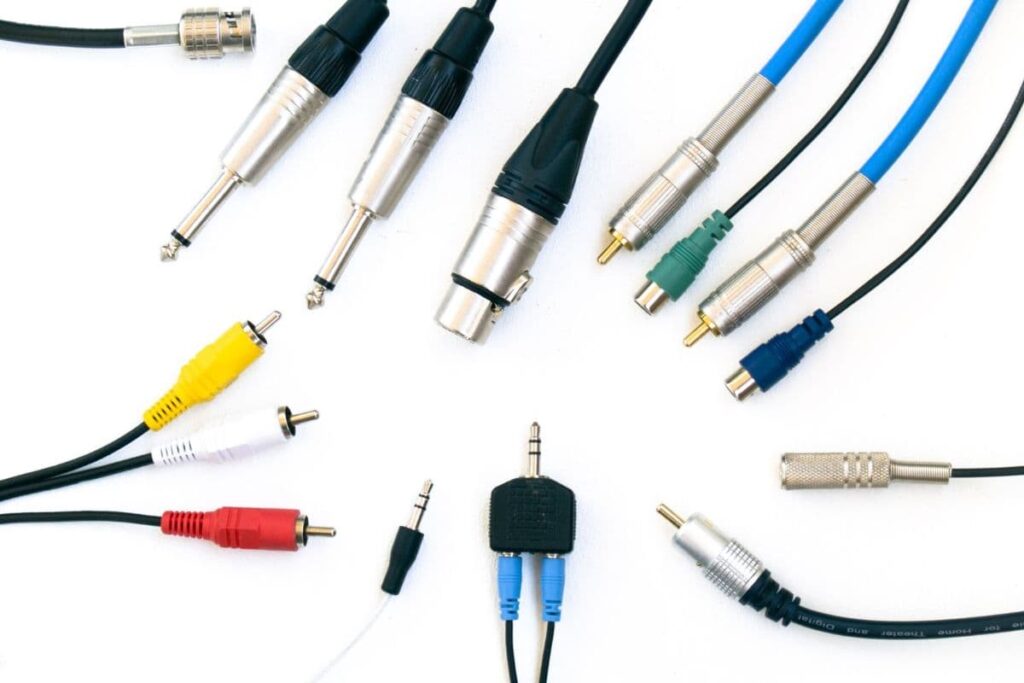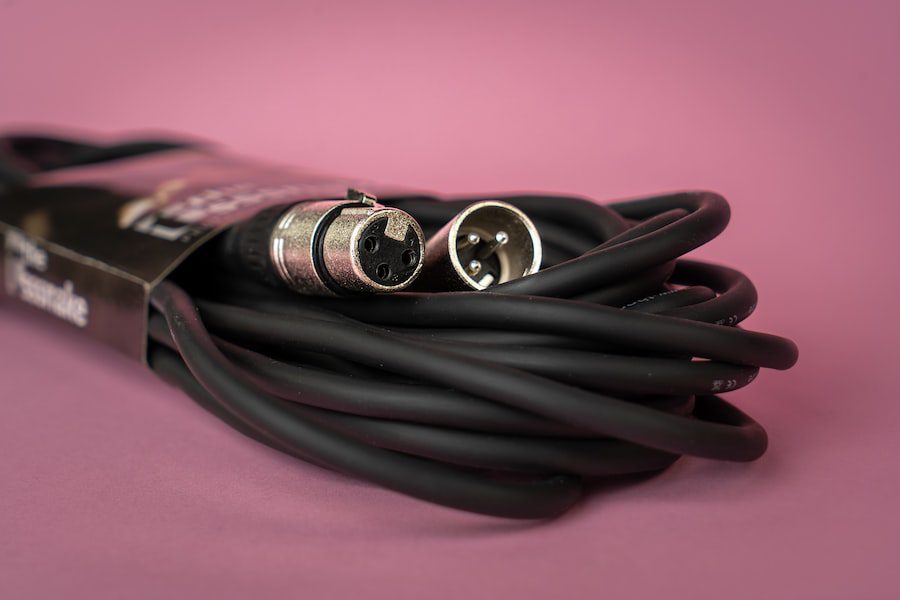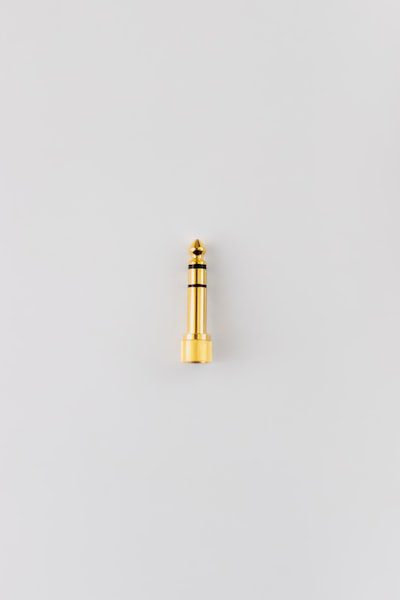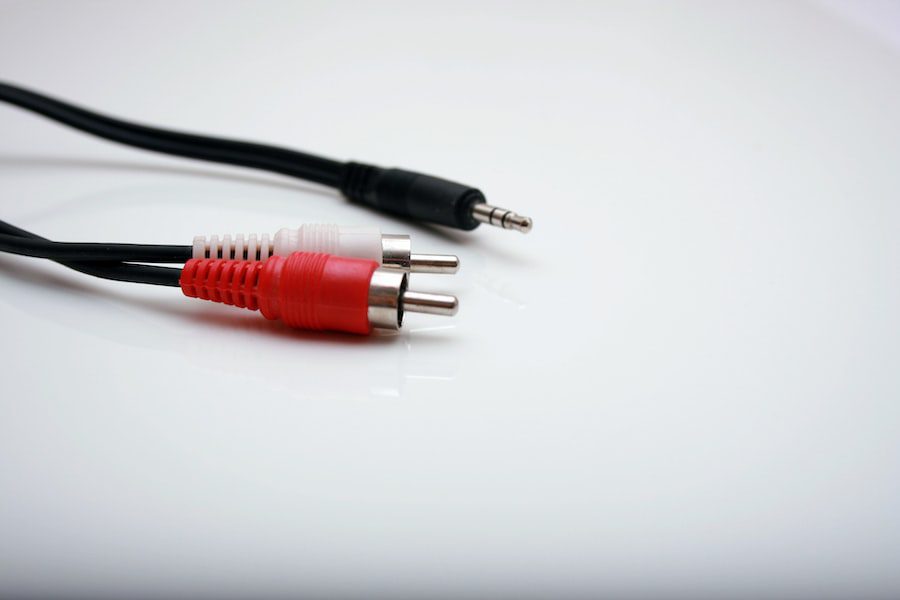If you’re in the process of setting up audio equipment, you might be wondering if you should use balanced or unbalanced cables. The term “balanced” may sound more appealing, but do they present significant benefits? And if they do, will balanced cables be compatible with all types of equipment?
Yes, you can use balanced cables on unbalanced audio signal outputs, but there will be no benefit. Balanced cables have two signal wires that cancel out noise while delivering audio signals. Unbalanced cables work fine unless the equipment is at a significant distance and the line is prone to interference.
Continue reading to learn more about balanced and unbalanced audio. This article will explain the differences to help you better understand what type of cable is more suited for your needs.
Table of Contents

Using Balanced Cables on Unbalanced Outputs
Balanced cables have different connectors, and you can easily plug some of them into unbalanced equipment.
On the flip side, you can also use unbalanced cables with balanced equipment. Still, the audio signal will remain unbalanced in both scenarios, leaving the unbalanced signal susceptible to interference and noise.
At a glance, the differences between a balanced and unbalanced cable may not be apparent. Audio cables are essentially insulated wires; balanced cables have three wires, while unbalanced cables only have two.
Let’s examine each cable more closely to see how they work and perform their respective functions.
Balanced Cable
Balanced cables contain a ground wire and two signal wires, all of which have conductors that transmit electrical energy.
One signal wire carries a positive (or hot) signal, and the other holds a negative (or cold) signal. Since the signal wires have opposing polarities, each audio signal is canceled out.
Balanced Output
The polarity of the cold signal is flipped before it reaches the other end of the balanced cable so that both balanced signals are in sync by the time it reaches the audio equipment.
A balanced connection removes any noise introduced by electrical interference or radio frequencies while preserving the original audio signal.
Types of Balanced Cables
One way to identify balanced cables is with the number of pins or contact points on their connectors. You should find three contact points if the balanced cable is mono and five if it is stereo.
Balanced stereo cables have two connectors per channel and a ground wire.
There are two types of connectors for balanced cables.
- XLR: X Latching Resilient or External Line Return
- TRS: Tip Ring Sleeve
XLR Connector

XLR cables have three to five pins, depending on whether they are stereo or mono. The most common use for XLR cables is microphones, but special XLR cables can be used with other audio equipment like speakers, amplifiers, mixers, and line-level audio equipment.
Please note that XLR microphone and XLR speaker cables are different, despite having the same connectors. The speaker cables are not shielded and are designed to conduct more power.
You should never use microphone XLR cables to connect speakers since they cannot handle the same energy level, which may damage your cables, speakers, or amplifier. XLR cables can stretch up to 200 ft without picking up any interference,
TRS Connector

TRS (Tip Ring Sleeve) connectors look like standard tips of ¼” or ⅛” cables, but what sets them apart is the additional ring between the tip and sleeve. These cables can carry balanced mono audio signals or unbalanced stereo signals.
Unbalanced Cable
Unbalanced cables (also known as single-ended cables) have two conductors: a signal wire and a ground wire.
The ground wire carries the negative signal and acts as a shield from radio frequency interference. However, if interference enters the unbalanced signal, it will be transmitted to the output device as noise.
The chances of interference increase as cables get longer. Hence, unbalanced cables are usually kept below 25 ft to prevent unwanted noise from entering.
Types of Unbalanced Cables
You can also identify unbalanced cables with their connectors. Below are the different connectors commonly used with unbalanced cables.
- TS: Tip Sleeve
- RCA: Radio Corporation of America
- Speakon
TS Cable

TS cables are usually referred to as instrument cables and have ¼” or ⅛” (3.5mm) tips with a single ring between the tip and sleeve. Cables with smaller TS connectors are commonly used in consumer products like earphones, while those with bigger tips connect guitars to amplifiers.
There are also ¼” speaker cables with TS connectors, but you should never interchange them with instrument cables since their internals are different.
Instrument cables have thicker shielding and a smaller signal wire, which may not be able to handle a speaker’s load.
Speaker cables will work as instrument cables but will be prone to much more unwanted noise due to thinner shielding.
RCA Cable

RCA cables usually come in pairs for a stereo connection, with a white (or black) jack for the left channel and a red jack for the right channel.
This unbalanced cable is often used to connect sound sources to amplifiers and was quite common due to its low-cost construction.
Choosing the Right Cable
Now you know the difference between balanced and unbalanced cables, it may seem as if balanced cables are always the better choice.
But, balanced cables cost relatively higher, and there are instances when unbalanced cables are more suitable.
When To Use Balanced Cables
Balanced cables are ideal for connecting audio devices with a significant range and are susceptible to unwanted noise and interference.
However, remember that you can only achieve a balanced connection if all circuit points are balanced, including your sound source and the mixer or PA to which you connect.
Unless the equipment on both ends of the cable is balanced (balanced inputs and balanced outputs), there is no reason to use a balanced cable.
Unless the equipment on both ends of the cable is balanced, there is no reason to use a balanced cable.
When To Use Unbalanced Cables
You can use unbalanced cables for short distances since interference is minimal within a 10-foot range. There’s also no point in using balanced cables if the equipment you’re connecting is unbalanced.
Final Thoughts
Balanced cables will work with audio equipment with compatible sockets for their connectors.
But even if you can technically use balanced cables with unbalanced audio equipment, the audio signal will remain unbalanced and prone to line noise.
- Review of the ALABS IRON MINI-WL: A Powerhouse Wireless Microphone - October 4, 2023
- What is a Saturator in Music Production: A Brief Explanation - May 11, 2023
- What Are Rotary DJ Mixers? An Overview - May 11, 2023
SoundStudiomagic.com is a participant in the Amazon Services LLC Associates Program, an affiliate advertising program designed to provide a means for sites to earn advertising fees by advertising and linking to Amazon.com. We also participate in other affiliate programs which compensate us for referring traffic.

